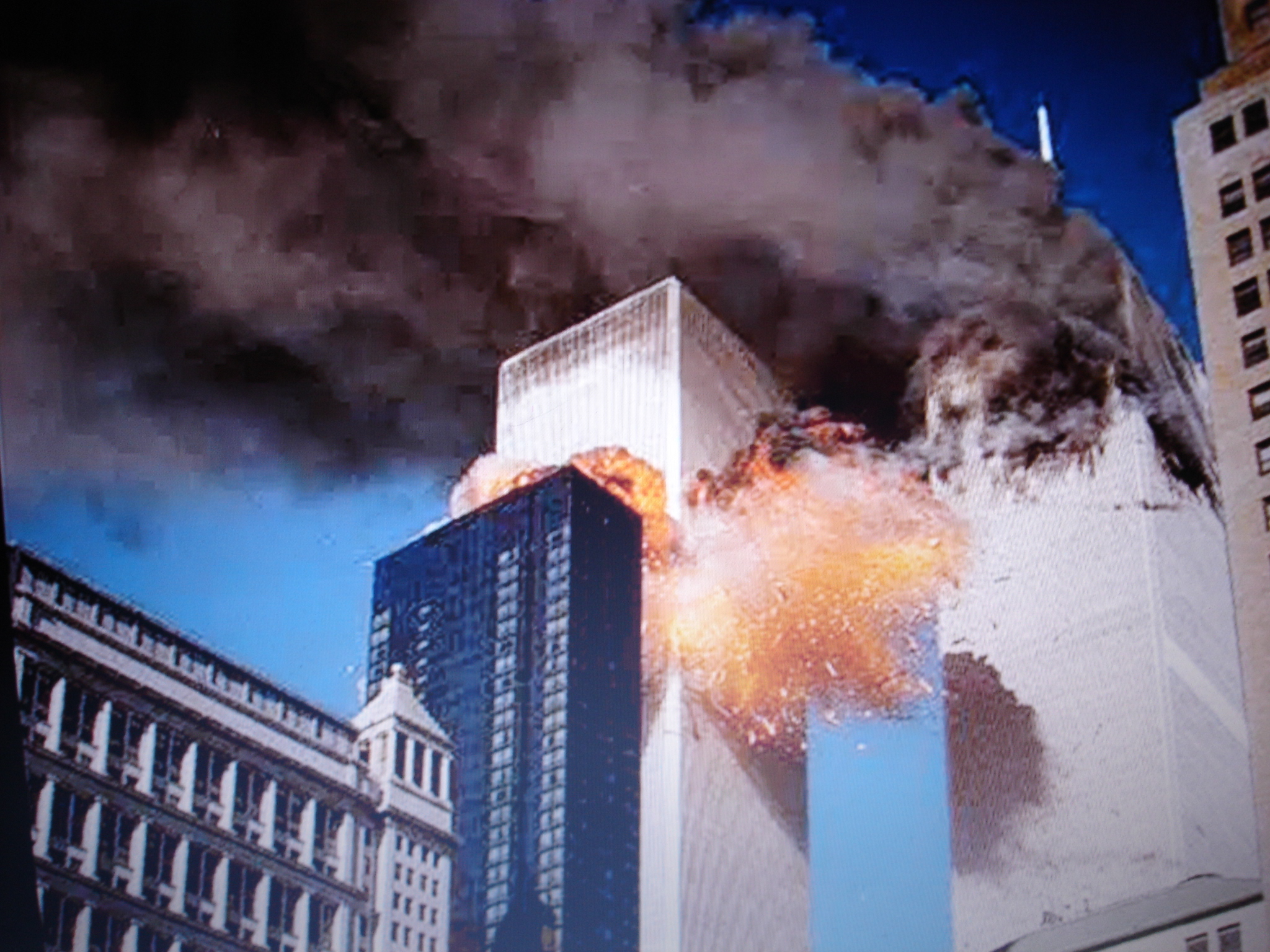“On the Transmigration of Souls” (2002), Composed By John Adams, commissioned by the New York Philharmonic and Lincoln Center’s Great Performers. This piece commemorates those who lost their lives in the September 11, 2001 attacks on the World Trade Center in New York. It won the 2003 Pulitzer Prize for Music as well as the 2005 Grammy Award for Best Contemporary Composition. Adams was the first composer to have earned the latter award three times, having previously won the award for El Dorado (1998) and Nixon in China (1989).
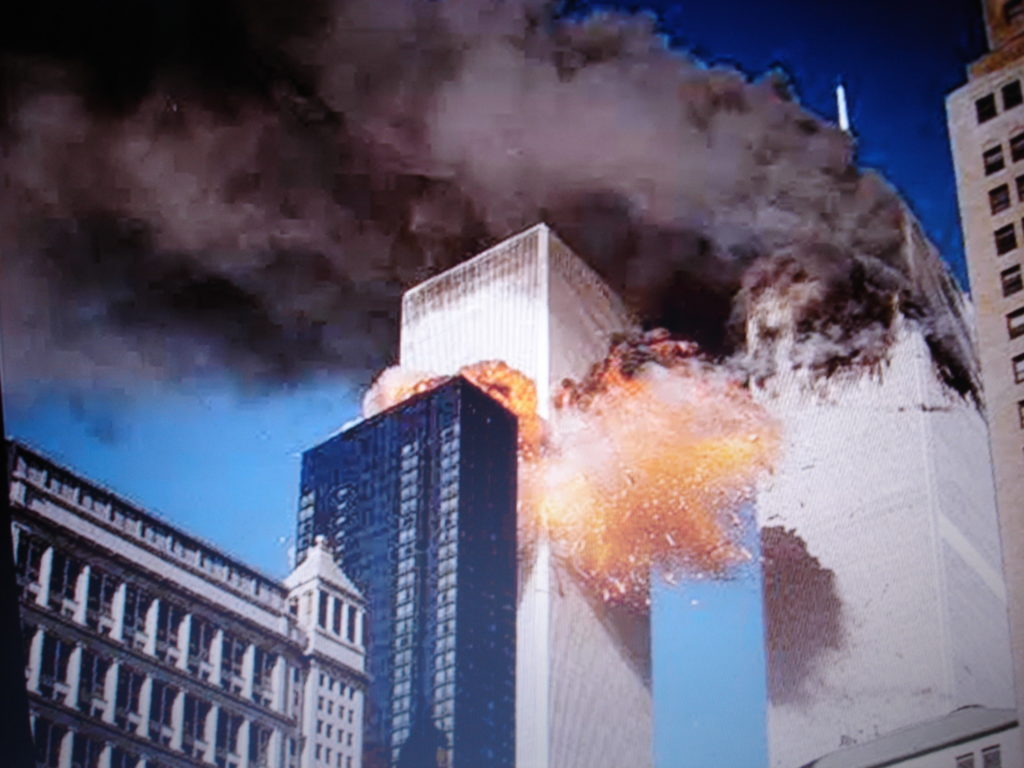
From Memory Spaces
By David Schiff in the Atlantic Monthly, April 2003
It is an oddity of our culture that more people own David McCullough’s book John Adams than any CD of music by the most prominent composer today, also named John Adams. Twenty years ago Adams seemed poised to lead contemporary art music out of the wilderness. Since that time his large body of work has bolstered Adams’s position as the most influential, technically gifted, and aesthetically ambitious composer of his generation. The vibrant rhythms and dazzling orchestration of The Chairman Dances (1985) and Short Ride in a Fast Machine (1986) have made them orchestral staples, yet his music is less familiar to the public than the work of George Gershwin, Aaron Copland, or Leonard Bernstein. Even though many composers now cultivate an audience-friendly style, new “serious” music remains nearly as marginal as it was during the heyday of academic atonality.
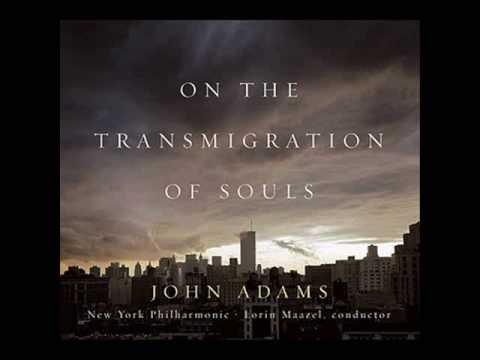
Watch this video on YouTube
Adams’s symphonic works, which at times sound like Sibelius superimposed on a Eurorock rhythm track, and his two controversial operas, Nixon in China (1985) and The Death of Klinghoffer (1990), mirror our confused feelings about the function of art music. Indeed, they revel in our ambivalence. But his recent On the Transmigration of Souls is a breakthrough. Terrifying and heartrending, it offers reassuring proof that contemporary classical music–too often dismissed out of hand as obscure and unpleasant–has something unique to say to a wide public.
Composers today can get tripped up by contrary expectations. They are told to be mavericks in the hopes that quirkiness will lure bright young listeners from alternative rock. But they are also told to make their music accessible and romantic, in order to reach–or at least not repel–the traditional (and older) concertgoer. What sets Adams apart, even more than his technical flair, is his ability to heed these mixed signals with a Whitmanesque desire to embrace contradictions. Adams’s music contains multitudes of ideas and moods. It is by turns goofy and grave, spiritual and erotic (sometimes both at once), extravagant and severe, profound and sophomoric. No contemporary music can compete with his for sheer beauty of sound–or, at times, for the power to offend listeners.
I can think of no living composer, and few artists in other media, whose work is more informed by the pleasures and terrors, hopes and disenchantments, of contemporary life. His music makes complex ideas vibrate with troubling energy. And like the greatest music of the past–Bach, Beethoven, Mahler–it can take us beyond those troubles and complexities to states of serenity, wisdom, and peace.
Adams grew up in New England, and while a student at Harvard he played clarinet in the Boston Symphony. After college he went to San Francisco, where he joined the anti-academic scene of minimalists, including Terry Riley (who launched the movement in 1964 with his ecstatically repetitive and tonal In C), and Pacific Rim composers, including Lou Harrison, who while atonal angst ruled on the East Coast continued to write euphonious, tonal music.
In the late 1970s Adams found a way to synthesize the styles of the two coasts, and his music has defied critical pigeonholing ever since. Works such as Phrygian Gates (1977), Shaker Loops (1978), Harmonium (1980), and Grand Pianola Music (1982) brought minimalism out of the lofts and into the concert hall. He infused a counter-cultural style with traditional musical ideas it had previously resisted, recasting the repetitious rhythms and simple harmonies of minimalism as virtuoso vehicles for classical performers. Adams had little use for the conceptual rigor or the emotional coolness of earlier minimalism. In the music of Philip Glass or Steve Reich everything you are going to hear appears in the first few seconds of a piece. The pleasure comes from observing the barely noticeable process of changes to the initial statement. With Adams anything could happen–and did, explosively. His post-minimalism was romantically transcendental, like the music of Liszt.
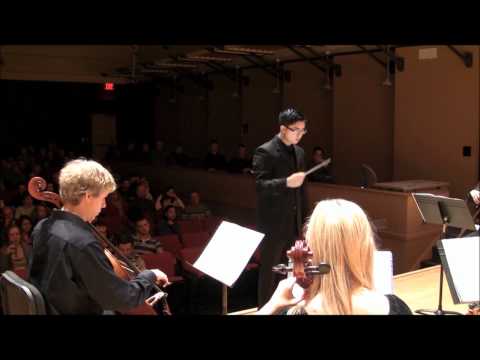
Watch this video on YouTube
Shaker Loops by John Adams, Central Washington University Chamber Orchestra.
Adams also gave the symphony orchestra, that nineteenth-century artifact, a twenty-first-century sound. Harmonium, a sprawling symphony for chorus and large orchestra, demonstrated Adams’s command of orchestral alchemy. By superimposing layers of instrumental oscillations and pulses Adams made the orchestra shimmer in a way not achieved since Ravel. But the symphony gave the orchestra a metallic, post-industrial sound, far from the traditional lush impressionist palette–like going from oil paint to acrylic. The density of sound (Adams writes thousands of notes) and the emphasis on the bright upper register make the live orchestra seem electronically synthesized, as if from a THX sound system.
On the Transmigration of Souls, commissioned by the New York Philharmonic to honor the victims of the 9/11 attacks, is a turning point in Adams’s work and, I hope, in American music. Adams has described the piece as “a memory space.” It superimposes pre-recorded street sounds and the reading of victims’ names by friends and family members, also pre-recorded, on live performances by a children’s chorus, an adult chorus, and a large orchestra. This complex twenty-five-minute work takes Adams’s high-tech sound into a spiritual realm.
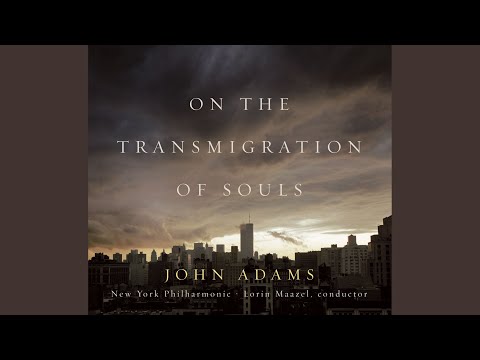
Watch this video on YouTube
Adams’s standing made it inevitable that he would be asked to compose a large-scale, highly publicized response to 9/11. Adams, as well as the Philharmonic, must have been anxious about the outcome. A master of rhythm, texture, and color but not a melodist, Adams was unlikely to produce a simple, lyrical piece like Samuel Barber’s Adagio for Strings, that perfect American elegy. More worrisome, Adams’s reputation had been shadowed by the controversy over The Death of Klinghoffer, a treatment of the Achille Lauro hijacking that many critics found anti-Semitic. (The opera’s Palestinians appear to be noble victims; its Jews seem to have stepped out of an episode of Seinfeld.) Soon after 9/11 the Boston Symphony decided to cancel previously scheduled performances of choruses from Klinghoffer. Given Adams’s leftist, green political positions (not at all exceptional in the East Bay, where he lives), the Philharmonic may have feared that he would exploit the commission to make a musical case for al Qaeda. Adams may only have heightened such fears by telling the press that he had many conflicting opinions about 9/11. But then, didn’t everyone?
It is not at all obvious how music, or any other art, should respond to catastrophe. Adams’s new piece left most critics awed but uncertain of their judgments, and at a loss for words–a loss I felt as I tried to imagine from the reviews what the music was like. Some critics had trouble relating the live to the taped parts of the score; the sound-on-sound texture reminded them, negatively, of movie music. I think the work makes such a powerful impact because of, not in spite of, the “extra-musical” elements; Adams was redefining the relation of music to non-music and of the concert hall to everyday life.
Transmigration does mix sound elements in a way that is unusual in classical music (Steve Reich’s Different Trains is a precedent) but commonplace in a movie theater. But film soundtracks, of course, do not also feature live performers. Only Adams could have combined these different elements with such imagination and technical skill. Like many of his earlier works, Transmigration speaks in a very contemporary idiom (Adams’s pieces often begin by laying down a stylized rock groove in the percussion) that is somehow haunted by a ghost of the musical past. In his great 1984 symphony Harmonielehre, Adams channels Sibelius (Fourth Symphony, 1911) and Mahler (Tenth Symphony, also 1911) in the slow movement, whose title, “The Anfortas Wound,” brings the ghost of Wagner to the table. Midway through my first hearing of his recent Naive and Sentimental Music, also a monumental symphony, I became aware that, without allusions or quotations, Adams was following the flight plan of Sibelius’s Fifth.
Sources:
http://www.earbox.com/W-transmigration.html
Follow WilderUtopia on Facebook…
Updated 11 September 2017

